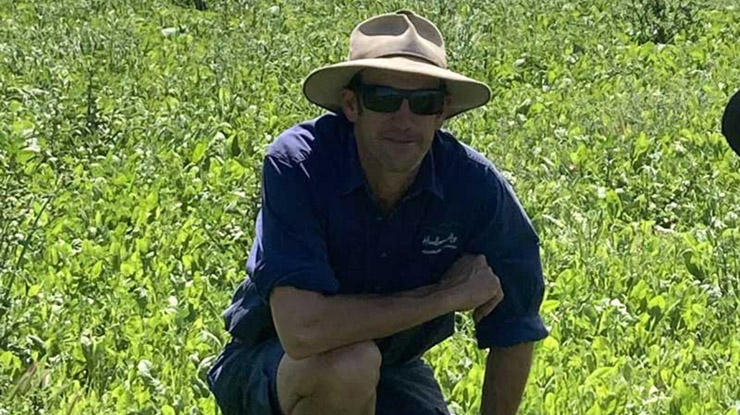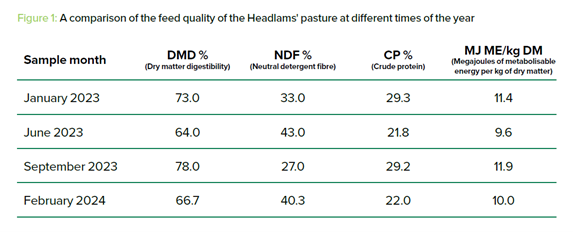 Tasmanian producer Chris Headlam.
Tasmanian producer Chris Headlam.
As irrigation expands across Tasmania's midlands, so is the area sown to pasture and fodder crops for intensive grazing, in rotation with other cash crops – and producers like Chris and Claire Headlam are looking for ways to gain value from their irrigated pasture mix.
The Headlams have 450ha of centre pivot irrigation on their Woodbury property, to grow poppies, barley and fodder brassicas for prime lamb production.
They aim to extend the grazing phase of their cropping rotation to compensate for a reduction in poppy area and provide a longer rest period for soils.
The challenge is to find a long-term irrigated pasture mix which can improve lamb weight gains without the risk of animal health issues.
Chris has earmarked diversity in his forage mix to help fill the feed gaps throughout the year.
Multi-species forage
The Headlams were involved in a project co-funded by the Tasmanian Institute of Agriculture (TIA) and the MLA Donor Company which looked at how to grow red meat productivity through perennial legumes. The researchers sowed a diverse forage mix into a trial paddock on the Headlam property in spring 2022.
After harvesting poppies from a 90ha pivot circle, Chris planted a forage brassica/oat mix in February 2022, which was grazed during autumn/winter. The paddock was sprayed out, multi-disced and drilled to a multi-species forage mix, including 2kg/ha chicory, 3kg/ha lucerne, 8kg/ha red clover, 2.5kg/ha phalaris and 2.5kg/ha of cocksfoot.
Chris ran his own trial alongside the TIA trial, which included 1.5kg/ha chicory, 6kg/ha lucerne, 2kg/ha red clover, 2kg/ ha white clover, 1kg/ha plantain, oats 15kg/ha and leafy turnip at 0.75kg/ha.
Phalaris and cocksfoot were added to increase the longevity of the TIA trial pasture, compared with Chris's mixed trial, which contained cereals. Over time the chicory and red clover numbers in the TIA trial will likely decline, leaving a stand of phalaris, cocksfoot and lucerne. This mix will
be highly responsive to summer irrigation, but also resilient in times of water stress.
The Headlams aim to extend the pasture phase of their cropping rotation while maintaining feed quality, as with annual fodder crop options. Samples from 2023 and 2024 showed that during the relatively warmer months of January and September, feed quality, particularly metabolisable energy (ME) and dry matter digestibility (DMD) are greater, compared to June (winter) – see Figure 1, below.

Feed test values for February 2024 were only marginally better than June 2023, which was attributed to the reproductive stage of the pasture.
While Chris doesn't have hard data yet, he said the new pasture mixes have resulted in reasonable weight gains and fewer metabolic disorders, such as pulpy kidney and red gut.
"It gets a diverse mix of bugs working in their gut," he said
"The TIA trial had phalaris and cocksfoot, and we currently don't have any perennial grasses in another mix we are trialling. It's been a good test to see what the grasses do year-round.
"We're looking for a species which produces well in spring and will fill the autumn-winter feed gap. It's about improving our grazing management, and we always strive to do that," Chris said.
"Getting grazing period and rest periods right, while leaving adequate dry matter for pastures to regrow."






